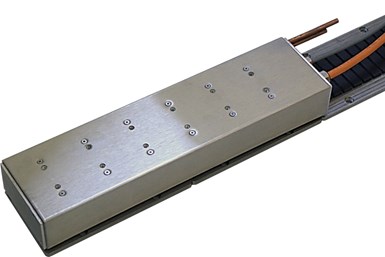NUM Adds New Line of Brushless Linear Servo Motors
NUM’s new LMX series of linear motors are designed to operate with a comparatively large air gap of 1 mm to reduce the impact of mounting tolerances on performance characteristics.
Share



Autodesk, Inc.
Featured Content
View More






Hwacheon Machinery America, Inc.
Featured Content
View More
Takumi USA
Featured Content
View MoreCNC specialist NUM has launched a series of brushless linear servo motors designed specifically for continuous duty cycle applications in machine tools.
NUM’s new LMX series linear motors incorporate a number of features to help mitigate the effect of arduous operating conditions. Their moving coil primary section is fully encapsulated in a stainless-steel housing with an integrated cooling circuit designed to maximize the flow rate, which also allows the use of low specific heat capacity cooling liquids. The motors have a short pole pitch to increase force density, minimize cogging forces and reduce thermal losses.
LMX linear motors comprise a metal track with multiple embedded magnets and a coil assembly supported by a customer-supplied guideway. A key feature of the motors is that they are designed to operate with a comparatively large air gap of 1 mm to reduce the impact of mounting tolerances on performance characteristics. For most machine tool applications, the track is held stationary and the coil assembly is free to move, but converse mounting arrangements are also practicable, with similar performance attributes.
Suitable for use with standard three-phase sinusoidal brushless servo drives, NUM’s LMX series linear motors are said to be especially cost effective when teamed with the company’s NUMDrive X or new NUM DrivePro drives. Both these families of high-performance drives feature a high degree of functional integration, making them some of the smallest on the market, and offer extensive safe motion monitoring and control options to help simplify design.
According to NUM, the new DrivePro drives are likely to be of particular interest to OEMs seeking maximum performance from NUM’s new LMX series linear motors. Implemented using advanced system-on-chip (SoC) technology and based on a multi-core ARM processor, the drives employ bare metal programming to eliminate operating system latency.











.png;maxWidth=150)

























